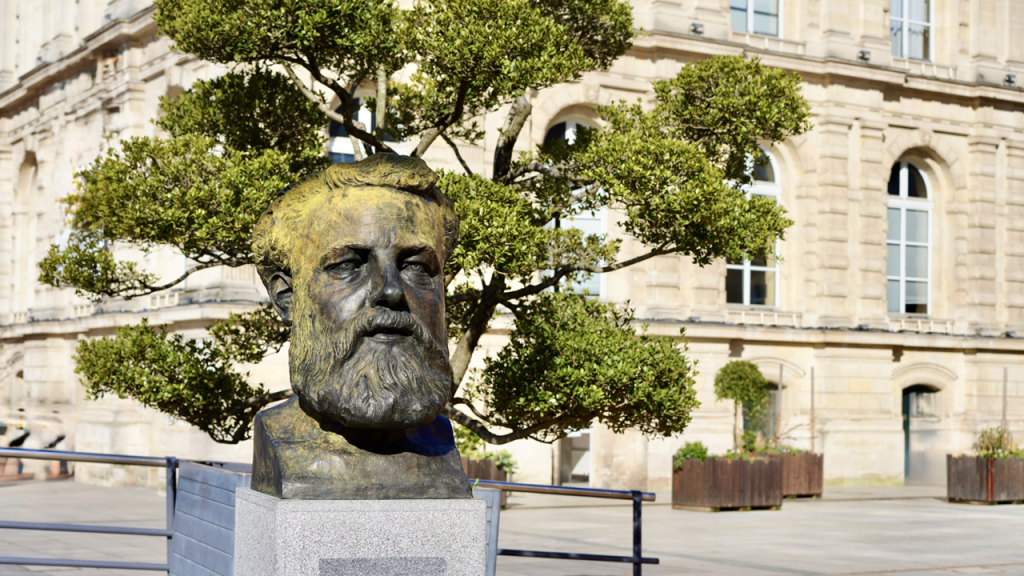
Memorial to Jules Verne, Amiens, ID 381624172 © Linda Williams | Dreamstime.com
One way to put my life in context is: when I was born, Robert Heinlein was king of science fiction.
Not that I knew this until ten or so years later, when I started to read my family’s collection of sci fi Penguins. We, naturally, also favoured British writers, who, if not noticeably more female or non-white, were at least less American gung-ho.
Now, the world of the future is very different, with some ‘non-binary’ writers, Afrofuturism, and radical ecologies. And good aliens, my favourite.
Between then and now, there have been a lot of post-apocalyptic dystopias, which I tend to keep away from. Post-scarcity anarchism is much more my thing (see Ursula K LeGuin, and Iain M Banks’ ‘Culture’, for example).
And hope.
If one defining feature of good Asset Management is developing longer term planning, and infrastructure urgently requires a future vision, can hopeful science fiction help us?
What’s your most inspiring example of a fictional future?
And a vision of future infrastructure?

30199342 | Happy © Michal Bednarek | Dreamstime.com
They say you should not have favourites among your children. But I found it impossible not to have favourite clients.
I always enjoyed some individuals, some asset managers in particular. More than being nice people – which they were – it was about understanding each other, speaking the same language. Many others I worked with over 30-plus years simply didn’t get what we were saying.
In another lifetime, I would love to figure out why I warmed to some regions more than others: why I loved asset managers in Indonesia, Malaysia, some Canada, west coast USA – and New Zealand, of course.
But favourite clients also include organisations run by the more visionary executives.
I did not always get near the C suite, or councillors. But my fondest working memories now are for those who were engaged. Taking me back to almost my earliest discussions about Asset Management change, about what is and is not possible unless there is a CEO who gets it.
Sometimes there were executives who almost got it, and those are not such happy memories. Some of them even know who they are, because I got to the point when I said this out loud, that they were not succeeding at Asset Management because of the bizarre choices they made. That they were the problem.
Happier to think about how much is possible if the top guys get it.
As opposed to industry sectors which believe in rapid turnover of CEOs who don’t stay around long enough to care about longer term plans.
Makes me think the ‘high reliability’ thinkers got it right about commitment.
How much real improvement on Asset Management is possible unless there is long-time leadership that cares?
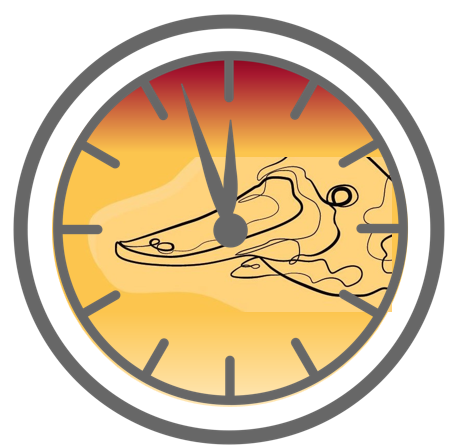
Our communities have delegated the management of physical infrastructure assets to us – including the worrying about the systems, the future, and change.
A key AM principle is not to kick the can down the road. For example, if you can see you will have a shortage of resources to manage the assets in ten years’ time, you have to start to deal with that now. (It will take you ten years to sort out.)
In the world of physical assets, things generally only get worse when you ignore them.
Assets degrade, and what is a small risk one day becomes a bigger risk simply through time. A failing asset that you don’t deal with becomes a more seriously failing asset.
However, human beings in general are not very good about time.
- We focus more on present benefits than future benefits
- We are not naturally good at understanding risks
- We are poor at noticing and paying attention to anything that changes relatively slowly, as opposed to immediate crises.
Generally, the people in the communities we serve won’t always have a great understanding about physical assets anyway, and are not good at thinking ahead for their future.
Communities need to be able to delegate the responsibilities to people who are good at it: who specialize not only at the engineering and maintenance of physical systems, but at managing through time, for the future as well as today.
We need to tool ourselves up, flex our through-time mental muscles. What will the decisions we make now look like to ‘future us’?
We will not always get it right, but with physical infrastructure we need to be the ones who can start to think about risk and benefits in four dimensions.
It is not obvious who else is ever going to do this!
What tools have you successfully used to manage the future?
Summarised from Legacy, our latest publication
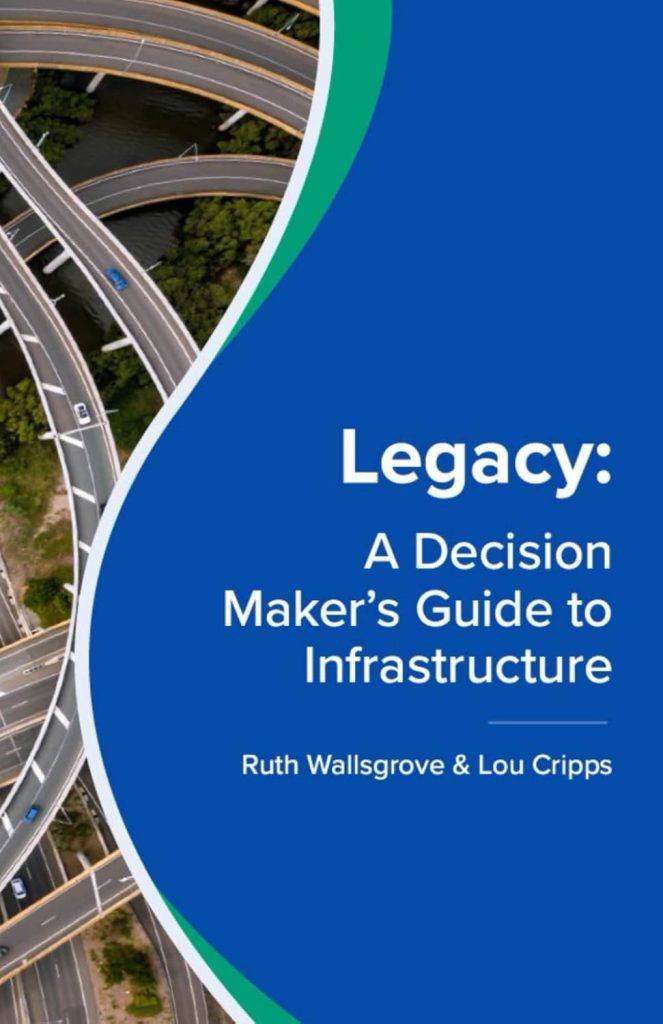
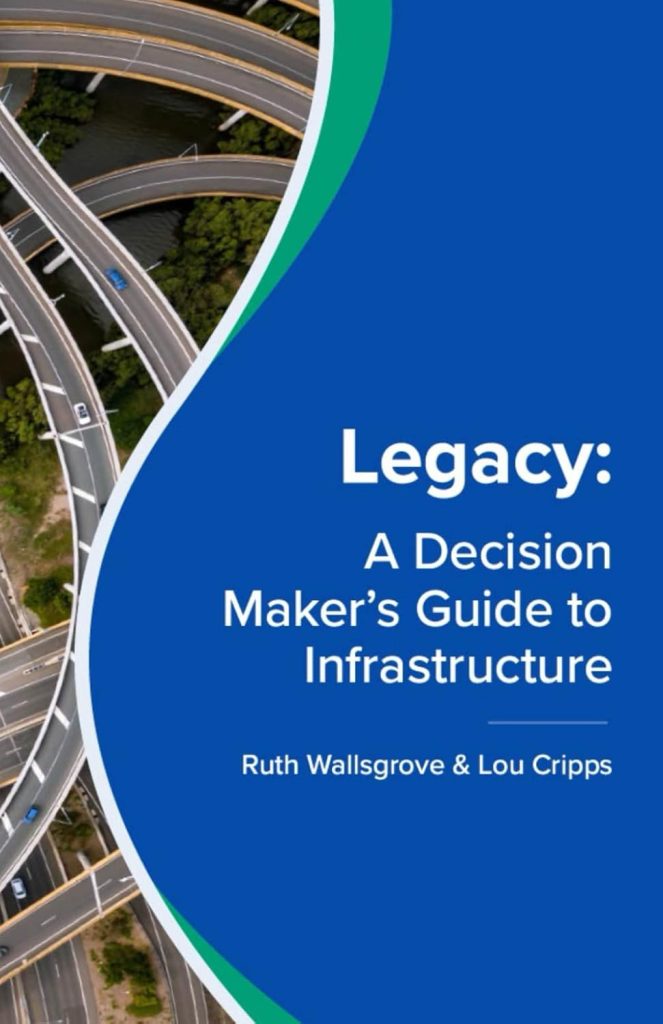
Legacy: A Decision Maker’s Guide to Infrastructure is published!
It’s a slim, elegant book aimed at councillors and C-suites to convey the realities of infrastructure, and the vital support a good Asset Management can provide to them.
Available as ebook or print on demand through Amazon.
‘Legacy: A Decision-Maker’s Guide to Infrastructure is not another technical manual. It’s a clear-eyed, call to rethink how we lead and make decisions about the physical assets that shape our daily lives – from water systems and roads to hospitals, parks, and transit networks.
Written by respected infrastructure thinkers, Ruth Wallsgrove and Lou Cripps, Legacy distills decades of frontline experience into practical guidance for those who carry the weight of stewardship. This isn’t about technology or buzzwords. It’s about responsibility. Clarity. Purpose. And asking better questions.’
Design by the wonderful Matt Miles – much gratitude again
see Resources
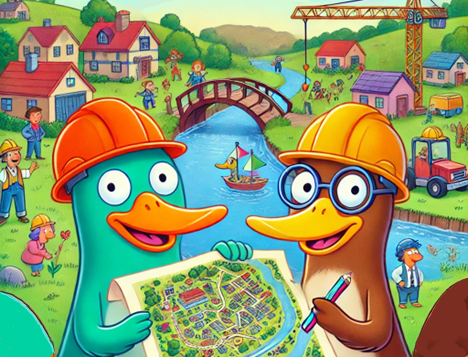
From script by Lou Cripps
Bad news for techies, but infrastructure is mostly money, business and politics.
Yes, Asset Management is about making better decisions on our physical assets. But not just any decisions: the wider, longer-term, strategy and co-ordination that organisations struggle with.
Operations already take care of immediate responses. Engineers are more than happy to focus on the technical details. Finance counts the money – but struggles to do more because it doesn’t get the honest information about the assets that it needs.
The gap that Penny Burns identified in 1984 was, first of all, planning for capital renewals to maintain the infrastructure base we already have, beyond the next year. A need most people didn’t even notice, let alone take on to fill.
In the forty years since, Penny has talked extensively about decisions for new infrastructure as well. About how the overall system needs to change to meet changing demands for service. And the impact of physical assets on the economy, the environment, our communities.
In other words, Strategic Asset Management.
In the past few years I have been asked to develop webinars and other support for better asset strategy and planning. My fundamental message is A. Strategy and planning are not the same, and B. they are complementary, and we need them both.
Over the next few weeks, we’d like to explore them both further. Starting with understanding why organisations are so bad at them.
- Asset Management planning is about the allocation of budget and resources. It therefore has plenty of opponents who only care that their own projects and assets get the money.
- Asset Management strategy requires standing back to think strategically, which many people (including CEOs) are not good at doing.
- There isn’t a formula, or a template. There are good questions, but some of them are hard, and many of them require saying no to some things, and some people. Not going along with the political clamour for simplistic solutions.
- There are vested interests – some of it bordering on corruption (who will make money from this decision?) And more who feel challenged on how they have done things in the past. Even on what they were trained to do.
What are your experiences of asset planning? What works – and what gets in the way?
Is any of it really a technical problem we can solve at our desks?
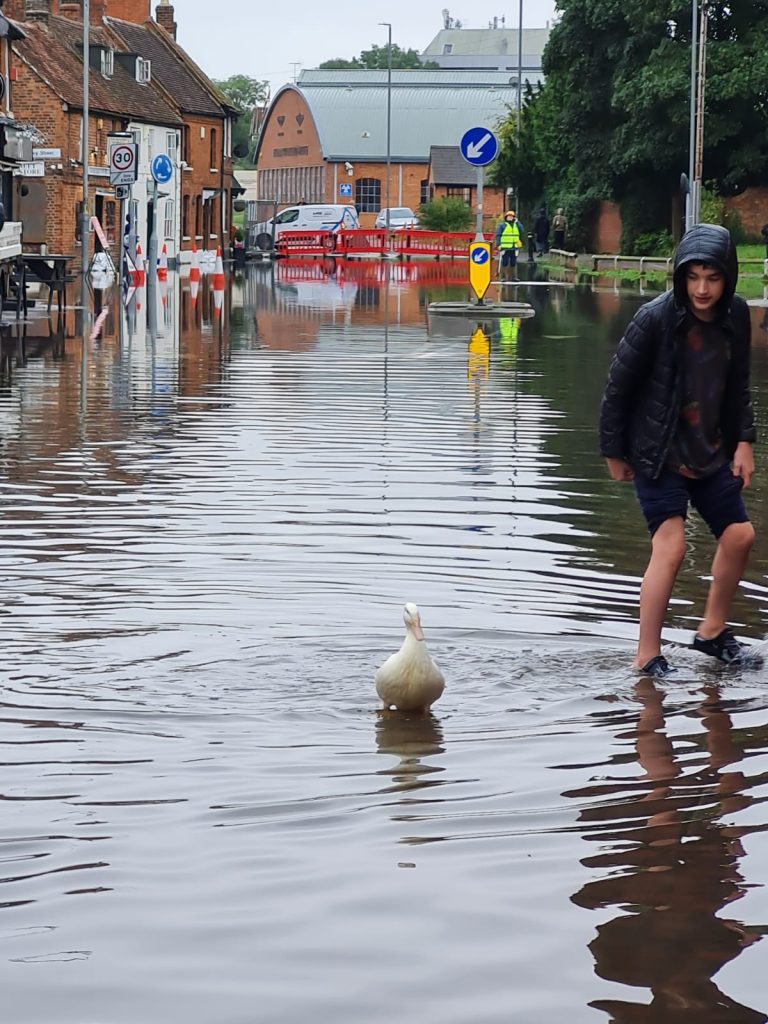
At least the pet duck enjoyed it
When we moved into our house, we first realised the problem when the mortgage company said we needed flood insurance, and discovered that would cost ten times the normal building and contents policy.
Until a smarter insurance company here sold us a cheaper policy based on postcode (in other words, by group of two or three houses), not Environment Agency flood areas: they spotted a market opportunity for a more precise risk assessment. Smug us!
Until six years later, and the house actually did flood.
And four years on, in late 2024, the water came to our front door twice, and overtopped the sand bags the second time.
And the risk of flooding in England is predicted to increase five-fold in the next decades under current projections for global warming.
However, Newport Pagnell is not Miami.
To be clear, our flooding is due to rain, and living next to where two rivers meet. Unfortunate timing of river surges – or someone getting the timing off on floodgates. We are nowhere near the sea and don’t get hurricanes, and so far the extent of our flooding is a few inches of water at the front of the house.
A few houses flooding a bit: you start thinking about resale values, and whether getting wet every year or so will do the brick walls and wood floorboards any good.
In South Florida, they face losing whole towns to the sea and the swamps. Many people live only a few feet above current sea levels, and the infrastructure is similarly low and at risk. They have to worry about overwhelmed sewerage systems and nuclear power plants.
Florida has such a tax-averse politics that it will come down to money for school education versus money for flood action soon for some towns. They continue to build right up to the sea and in areas only just above sea level, even as they watch the hurricanes track towards them. And of course the ruling Republicans also mostly deny climate change.
It would seem a perfect storm of human inability to face the facts.
But it is striking just how much of an issue it is for infrastructure. And that involves use of tax dollars, national insurance schemes, building codes, politics and Politics: so much more than simply technical questions.
Do we speak the right language/s to manage this?

Just a reflection on our own institutions.
I have been involved with the IAM on and off for almost 25 years. I attended Asset Management Council meetings and conferences (under different names) when I lived and worked in Australia in the 2000s. I have been impressed by the IPWEA since someone brought back a copy of the IIMM to the UK around 2001. My boss was instrumental in setting up the GFMAM.
These are just the most obvious AM institutions. (But shout out to Canadian AM networking here, too.)
They have not always been particularly friendly to each other, but at roughly 30 years old at their oldest, we seem to have developed some institutional maturity.
I was heartened to realise that, for all its limits – well delineated by Richard Edwards and others at the recent IAM UK conference – the revisions and new ISO 55000 documents involved hugely more people this time around.
The IAM itself has grown and now functions in more European and Asian countries, as well as succeeding in the USA; it has a truly excellent CEO in Ursula Bryan. I love the IPWEA ‘Ask Your Mates’, the kind of practical support we need from out networking.
But perhaps the best sign of all was a workshop last month on ‘Peak Infrastructure?’. A room full of Asset Managers asking what infrastructure we really need. And how there is work still to be done to make a lasting difference. Changing national government policies not to incentivise (or give in to developers and construction companies) building new when we can maintain what we have.
All physical assets come at a cost, often a very steep one in impact on the environment and communities. We have to take the lead to make sure we understand costs versus benefits.
That’s the real question when we get together as Asset Managers.
*IAM: Institute of Asset Management, HQ in UK. IPWEA: Institute of Public Works Engineering Australasia. GFMAM: Global Forum on Maintenance and Asset Management, established by the IAM, Asset Management Council and others. Asset Management Council in Australia. Canadian Network of Asset Managers, plus Provincial AM networks such as AMBC and AMOntario.
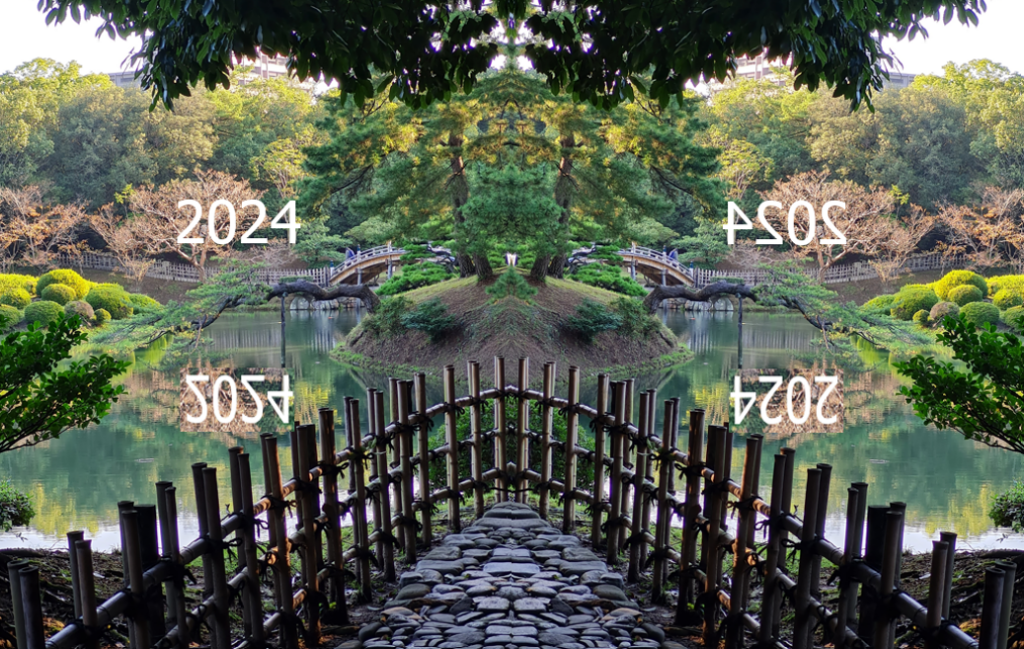
At this end of 2024, I am more convinced than ever that the whole point of Asset Management is Planning.
Planning, as opposed to delivery – which we have been doing for decades, if not centuries. Asset Management is about thinking through what we need to deliver across our asset base, Plan before Do. (Don’t just do something, sit there.)
That is what Penny created Asset Management for.
And the central concept was lifecycle modelling, supported by cost-risk-optimisation, matched to understanding demand. When is the right time to replace, renew, maintain? What don’t we need to do?
The AMP has been the centre of Asset Management since the very beginning. As captured in state and federal requirements, as documented in the International Infrastructure Management Manual from the IPWEA.
We need Planning – and it is not going to happen without us.
But it is too often still – after 40 years! – fragmentary, driven by vested interests (even the understandable wish by people on the ground to get money for their own assets).
It doesn’t look at what happens next: ‘And then what?’
And I can count the organisations I work with that actually do lifecycle cost modelling or cost-risk optimisation on the fingers of two hands.
To do the maths on all the major costs, risks and benefits of different options across the lifecycle, and demonstrate that (for example) building back rural roads like for like after they have been washed away for the fourth time in five years simply doesn’t add up.
Time for a Campaign for Honest Asset Management Planning?

Me at my favourite coffee shop
Most mornings I have coffee in my favourite coffee shop and have a chat with George, the barrista. I like George and I want his coffee shop to remain viable – difficult in these times of rising prices – so, in addition to the pleasure of the coffee itself, I get satisfaction from knowing that I am contributing in a small way to his continuing income. I could have spent my $6 in another coffee shop or not on coffee at all and then those dollars would contribute to someone else’s income and job sustainability so I know that my expenditure is not increasing the number of jobs in total, I am simply impacting (admittedly in a very small way) where the jobs are being created or preserved.
But let us consider this same type of transaction – purchasing something for money – on a far larger scale. The government decides to build more infrastructure, say for a billion dollars, and it justifies that expenditure on the grounds that it is ‘creating thousands of jobs’. Let us set aside for a moment that the number of jobs is usually greatly exaggerated, never validated, and many of them may last only a few weeks or months. The real question is: are these jobs ‘additional jobs’, which is the way we are expected to view it and generally do, or have we simply changed the type and location of the jobs?
The government could have spent that one billion on community services (doctors, nurses, teachers, police etc or, indeed – if infrastructure is so important – on the maintenance of existing infrastructure ), or it could have left it in your pay packet instead of raising taxes to fund its infrastructure spend, but it chose to spend it on bricks and mortar. We like the idea of ‘more’ jobs being provided. We are less thrilled about the idea of jobs being lost. Fortunately for our peace of mind we do not see the jobs that are lost and although we do experience the lack of services that results we do not necessarily associate the two. So let us look at a typical project.
In December 1985 when the Adelaide Casino was established by the state owned Lotteries Commission, there was much hype about how many jobs would be ‘created’ by the Casino. And indeed, for the first six months, there was great excitement about this novelty. People flocked to it, abandoning their usual venues. It was the first Casino in the state and many went there to drink or eat, and some to gamble and the Casino employed many. After a while, however, the novelty wore off, fewer people went and the number of service people employed by the Casino declined. Customers sought to return to their previous venues but some of these, having to cope with reduced incomes in the interim but still pay high city rental prices had gone broke and moved out. Trouble was, in calculating the increase in jobs, no attention had been paid to where the new Casino customers were coming from or how long they would remain customers. The lovely little coffee shop I frequented in the city, which provided chess sets and boards for its customers, was sadly one of those that went out of business.
The moral of this story is when thousands of new job are vaunted, stop, look closer.
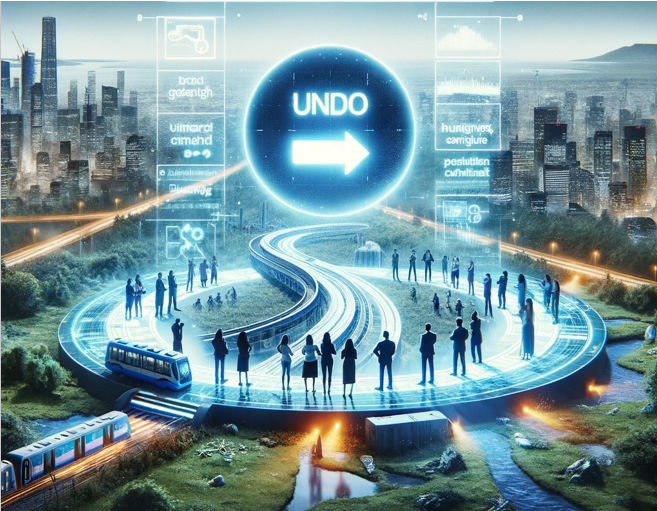
My team makes use of premortem thinking: as part of planning action, immediate or long term, consider how it might go wrong. We think ourselves into the future looking back at a project (or a meeting). Humans are surprisingly good at this time-travelling.
For me, this is part of a principle Asset Managers should embrace: the principle of reversibility. It’s not just about understanding the consequences of our decisions, but also about planning for the ability to undo or reverse their effects if needed. Sure, you can’t un-ring a bell, but we can find ways to get as close as possible to the pre-action state and minimize the impact if we think about it right from the start.
Do our plans have exit strategies or an undo button? None that I have seen, why not?
This is especially crucial in infrastructure projects, where large investments and long lifespans magnify the potential impacts. How would they be delivered differently if that was required? Would that requirement cause us to better maintain the infrastructure we currently have? I think so.
Let’s face the hard questions: Can we put rare earth metals back in the ground? Can we undo the energy consumed in building something new?
By embracing the principle in Asset Management and infrastructure decision-making, we can strive for resilient and adaptive systems that serve the present while safeguarding the future of generations to come. We navigate challenges with eyes wide open.
We ask tough questions, anticipate consequences, and face the answers with truth – and then we create our plans and strategies.

Recent Comments